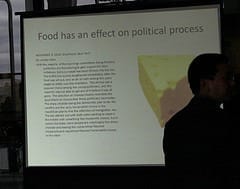Fortunately, there is an antidote: the conscious pause.
WHEN the Supreme Court announced its decision on the Affordable Care Act last month, the media went wild. The rush to judgment took seconds. CNN and Fox News initially described the decision incorrectly, saying five justices had struck down the law. Even after corrections, the snap analysis that followed wasn’t very helpful. The multipart decision is complex, and its ramifications will take months or even years to understand.
The blink response to this case is only the latest example of a troubling increase in the speed of our reactions. E-mail, social media and the 24-hour news cycle are informational amphetamines, a cocktail of pills that we pop at an increasingly fast pace — and that lead us to make mistaken split-second decisions. Economists label the problem “present bias”: we are vulnerable to fast, salient stimulation.
Fortunately, there is an antidote: the conscious pause. Scientists have found that although we are prone to snap overreactions, if we take a moment and think about how we are likely to react, we can reduce or even eliminate the negative effects of our quick, hard-wired responses.
For example, countless studies have shown that physicians’ immediate, unconscious reactions to racial minorities lead them to undertreat black patients. In one study published in the Journal of General Internal Medicine in 2007, researchers asked several hundred doctors about a hypothetical 50-year-old male patient who showed up with chest pain. The researchers gave the doctors a photograph of the man, randomly varying his race. Half saw him as white; half saw him as black.
Sure enough, although the doctors insisted they were not racially biased, they were more likely to prescribe thrombolysis, an anti-blood-clotting procedure, for the white patient, while giving the black patient a less-aggressive prescription. The doctors didn’t appear racist, yet their unconscious snap reactions led them to treat blacks differently — the very definition of racism.
However, about one in four of the doctors guessed that the study was designed to test racial bias. They stopped for a moment and considered how they might react differently depending on race. The researchers found that this “aware” subgroup did not treat patients differently. Once they paused to consider whether race was an issue, race was no longer an issue.
via New York Times – Frank Partnoy
The Latest Streaming News: Conscious Pause updated minute-by-minute








